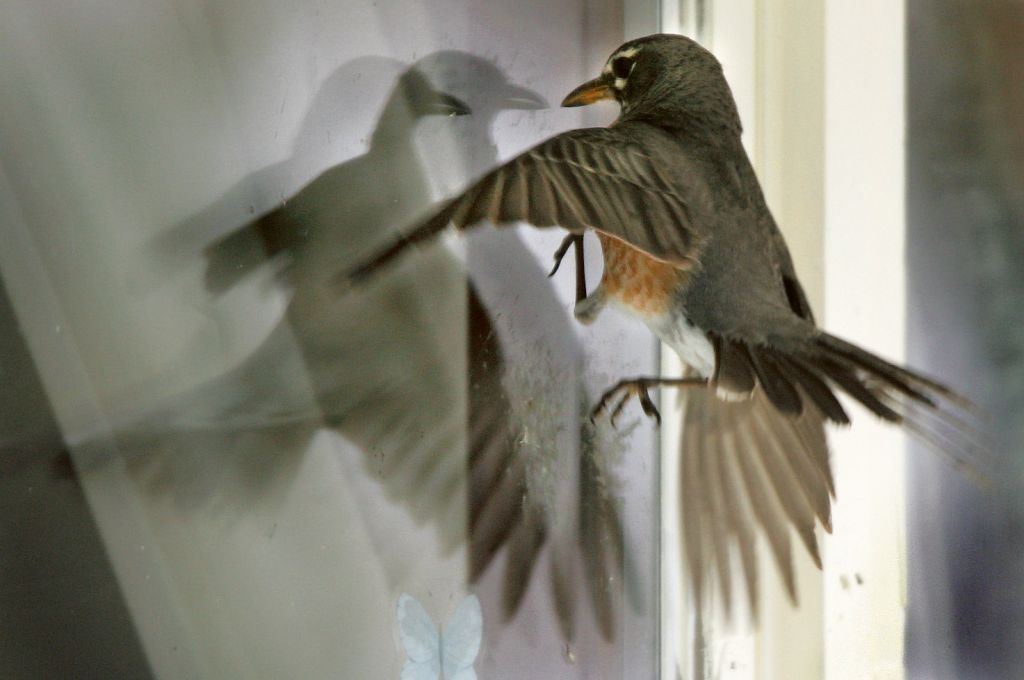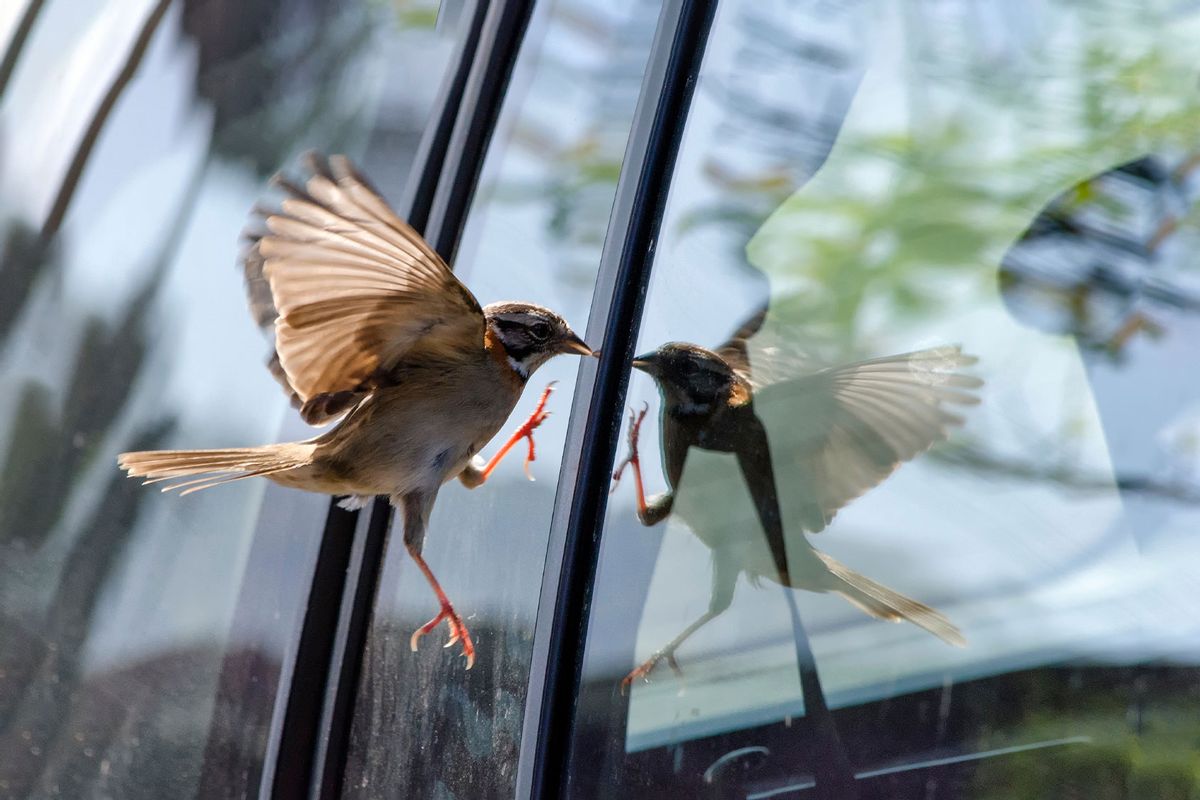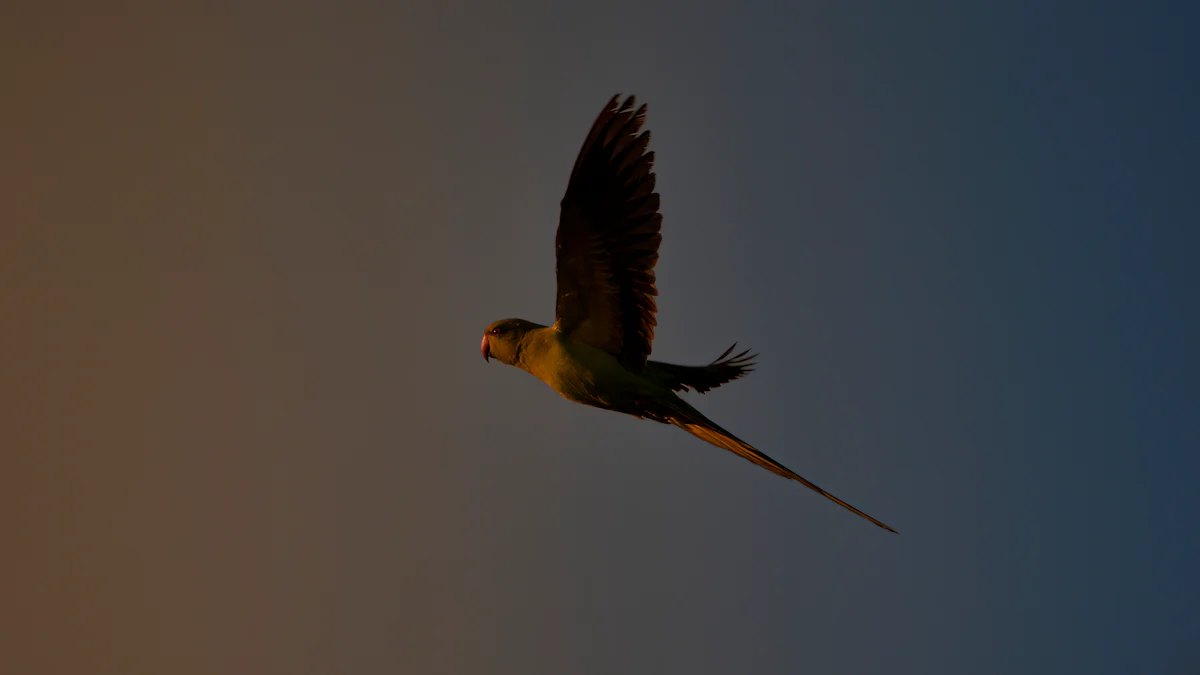
Birds often collide with windows, leading to significant fatalities. Each year, between 365 million and 1 billion birds die from these collisions in the United States. Birds fail to recognize glass as a barrier, mistaking reflections for open sky or vegetation. This issue disrupts ecosystems and threatens bird populations. Addressing this problem is crucial for conservation efforts. Implementing solutions can prevent when bird hits your window, ensuring safer environments for avian species.
Understanding the Problem: When Bird Hits Your Window
Why Birds Hit Windows

Birds often collide with windows due to two main reasons: reflection and transparency. Glass reflects the sky, trees, and other elements of nature. Birds perceive these reflections as open spaces or habitats. This illusion leads birds to fly into windows. Transparency also plays a role. Birds see through glass to indoor plants or light sources, mistaking them for outdoor environments. The combination of reflection and transparency makes glass an invisible threat to birds.
Reflection and Transparency
Reflection creates a mirror-like surface on windows. Birds see the reflected images of trees and sky. These reflections appear real to birds. The deception causes birds to fly towards the glass. Transparency allows birds to see through windows. Indoor plants or bright lights attract birds. The clear view through the glass confuses birds, leading to collisions. Both factors contribute significantly to bird-window collisions.
Flight Paths and Habitats
Birds follow specific flight paths during migration or daily activities. These paths often intersect with buildings. Urban areas with tall structures disrupt natural flight paths. Birds encounter windows more frequently in these environments. Buildings near natural habitats pose additional risks. Birds living in these areas face higher chances of collision. Understanding bird behavior helps in identifying high-risk zones for collisions.
Common Times and Locations for Bird Collisions

Bird collisions with windows occur throughout the year. However, certain times and locations see higher incidents. Recognizing these patterns aids in implementing preventive measures.
Seasonal Patterns
Bird collisions peak during migration seasons. Spring and fall witness increased bird movement. Migratory birds travel long distances. These journeys bring birds into contact with urban environments. The increased activity raises the risk of collisions. Seasonal changes in daylight also affect bird behavior. Longer daylight hours in spring and summer lead to more active periods for birds.
Urban vs. Rural Areas
Urban areas report higher bird-window collisions. The density of buildings increases the likelihood of encounters. Glass structures in cities pose significant threats. Rural areas with fewer buildings see fewer collisions. However, rural buildings near natural habitats still present risks. Birds in these areas may not recognize windows as barriers. Both urban and rural settings require tailored solutions to prevent when bird hits your window.
Solutions to Prevent Bird Collisions

Window Treatments
Decals and Stickers
Decals and stickers offer an effective way to prevent bird collisions. UV decals or markers work well on large windows. These decals form a grid pattern that alerts birds to the presence of a solid surface. Patterned decals feature distinct designs that break up reflections. These designs mimic frosted or etched glass, creating a visible obstruction. Bird tape and easy-cling decals also help. These items break up reflections and are easy to apply. They reflect ultraviolet light, making windows more visible to birds.
Window Films
Window films provide another solution for bird collisions. These films break up reflections and prevent bird strikes. A pattern of spaced dots or stripes works best. This pattern creates a visual barrier that birds can detect. Window films can be applied to any window size. These films offer a long-lasting solution to bird-window collisions.
Adjusting Window Placement and Design
Angled Windows
Angled windows reduce bird collisions. The angle changes the reflection, making it less attractive to birds. Angled windows also alter the transparency. Birds see less of the indoor environment. This design helps birds recognize windows as barriers. Angled windows fit well in both new constructions and renovations.
External Screens
External screens serve as a physical barrier for birds. These screens minimize window reflections. Birds see the screens and avoid flying into the glass. External screens also protect windows from debris. The installation process is simple and cost-effective. External screens provide a practical solution for reducing bird collisions.
Landscaping and Environment Adjustments
Planting Shrubs and Trees
Planting shrubs and trees near windows can deter bird collisions. These plants create a natural barrier. Birds perceive the foliage as a solid object. Shrubs and trees also provide habitats for birds. This greenery enhances the environment while preventing collisions.
Bird-friendly Gardens
Creating bird-friendly gardens offers a dual benefit. These gardens attract birds to safe areas. Bird-friendly gardens include native plants and water sources. These elements provide food and shelter for birds. Placing these gardens away from windows reduces collision risks. Bird-friendly gardens contribute to a safer environment for avian species.
Additional Assistance and Related Topics
When Bird Hits Your Window: Helping Injured Birds
Immediate Steps to Take
When bird hits your window, immediate action can save the bird. Approach the bird slowly to avoid causing more stress. Use a soft cloth or towel to gently pick up the bird. Place the bird in a ventilated box to keep it safe. The box should be quiet and dark to help the bird calm down. Monitor the bird for signs of recovery. If the bird seems alert after some time, release it outside. Ensure the release area is free from predators.
Contacting Wildlife Rehabilitation Centers
In many cases, injured birds need expert care. Contact a wildlife rehabilitation center if the bird shows severe injuries. Sunny Kellner, a wildlife expert, emphasizes the importance of professional treatment. Experts at these centers provide medical care that most individuals cannot offer. Help Wildlife advises considering risks before attempting treatment yourself. Wildlife rehabbers have the skills to handle various bird injuries. They also understand the specific needs of different bird species. Contacting professionals ensures the best chance of recovery for the bird.
Attracting Birds to Safe Areas
Bird Feeders and Baths
Bird feeders and baths attract birds to safer areas. Place feeders away from windows to reduce collision risks. A distance of 30 feet or more works best. Alternatively, place feeders closer than 3 feet to minimize impact speed. Bird baths provide water for drinking and bathing. Clean the baths regularly to prevent disease spread. Both feeders and baths create a welcoming environment for birds. These installations help divert birds from dangerous window areas.
Creating Safe Habitats
Creating safe habitats encourages birds to stay away from windows. Plant native shrubs and trees to provide food and shelter. Native plants support local bird populations by offering natural resources. Arrange plants to form a barrier between birds and windows. This setup reduces the likelihood of collisions. Safe habitats contribute to a thriving bird population. These environments ensure birds have secure places to live and feed.
Preventing bird collisions remains crucial for preserving avian populations. Implementing solutions can significantly reduce incidents when bird hits your window. The Javits Center's retrofit with fritted glass reduced bird collisions by 90%. Creating a bird-friendly environment benefits both birds and humans. Daniel Klem emphasizes that birds often mistake reflections for open sky. Solutions like decals, angled windows, and bird-friendly gardens help address this issue. Encourage the adoption of these strategies to ensure safer habitats for birds and enrich local ecosystems.
To learn more about these initiatives and explore additional tips to better protect birds, visit our blog list!













